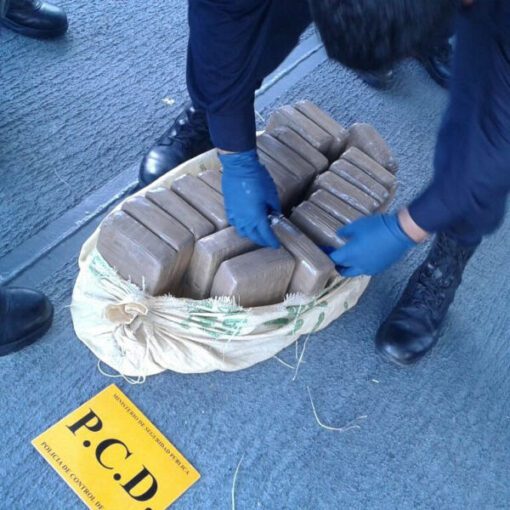Q24N — Costa Rica became one of the first countries globally to disband its military forces after its civil war ended in 1948 when José Figueres Ferrer abolished the army and directed defense funding to education and healthcare during his three presidential terms.
Despite growing insecurity throughout Central America and military coups that plagued Latin America throughout the 20th century, Costa Rica’s lack of an army spared it such political instability and helped it earn the distinction of having the region’s longest-standing democracy. However, this historically safe country without a military is now facing challenges as drug trafficking permeates various levels of its society.
Costa Rica’s geographic location plays a pivotal role in drug trafficking, according to the US Department of State’s latest International Narcotics Control Strategy Report (INCSR) published in March 2023.
– Advertisement –
This non-militarized country in the heart of Central America is home to an extensive maritime territory with access to both the Pacific and Atlantic oceans. Considering this, it has become one of the main transit points for drugs traveling from South America to the United States and Europe.
Drug traffickers were compelled to use Central America as both a transit point and storage facility during the first months of the COVID-19 pandemic, InSight Crime reported. This has contributed to an increase in drug trafficking as mobility gradually resumed, it added.
Criminal organizations have worked to consolidate their activities in Costa Rica by making the country a key transshipment point. For example, cocaine and fentanyl are exported from the Moín port in the province of Limón directly to Rotterdam in The Netherlands, Sheerness in the UK, and Antwerp, Belgium.
These ports are also major destinations for Costa Rican fruits such as pineapples and bananas. In 2018, Spanish authorities discovered 67 kilograms of cocaine concealed within hollowed-out pineapples originating from Costa Rica. The existing licit trade flows allow for easier movement of illicit goods via the same routes.
Costa Rica’s domestic drug consumption has also increased, leading to an expanding local drug market. Both the increase in domestic consumption and the growth of the country as a transshipment point are responsible for a notable increase in violence.
Foreign criminal organizations take hold in Costa Rica
– Advertisement –
Fighting between rival criminal organizations has erupted in Costa Rica, marked by a series of reprisals in the form of murders, torture, and robberies. This escalation in violence has led to a 40% surge in Costa Rica’s homicide rate, which hit a record level in 2023 at 17.2 homicides per 100,000 people. Criminal organizations from Colombia, Mexico, and as far away as Italy have found fertile ground to sow new relationships and expand operations in the country.
When examining the homicide data further, the disproportionately high number of youth casualties — including minors — is particularly concerning. One of the contributing factors, the romanticization of narco-culture, is a growing issue not just in Costa Rica but across the Americas.
When coupled with limited economic opportunities, this romanticization has created fertile ground for foreign criminal organizations to recruit young people in Costa Rica.
Criminal activity tied to drug trafficking is becoming further entrenched in Costa Rican society, and local authorities have been caught unprepared. Areas such as Chacarita in Puntarenas province and El Tortuguero in Limón province have become notorious for gruesome murders, often involving victims being shot more than 20 times.
– Advertisement –
Youth involvement in these criminal activities extends beyond mere labor for gangs, as young people also form a significant portion of the client base for drug consumption.
This reality has led to high school classrooms becoming a breeding ground for both drug sales and consumption, which was virtually unseen in Costa Rica a decade ago.
Rapid strengthening of local currency sparks questions
Meanwhile, Costa Rica’s local colón currency has appreciated over the last two years.
While Costa Rica’s economy has grown post-pandemic, the colón’s significant appreciation against the dollar — 25% in 18 months — has raised questions about how much of that strengthening is exclusively tied to licit ventures.
Members of the National Council for Supervision of the Financial System (CONASSIF), including Sylvia Saborío, have raised questions about whether drug dollars could be strengthening the currency.
Costa Rica’s central bank acknowledges that 48% of incoming foreign currency originates from unidentifiable sources due to existing regulations, El País reported. However, it has also stressed that there is no evidence indicating that illicit funds are involved in the currency market. It recently implemented new reforms to help track where the dollars are coming from, but these efforts are just a start.
President Rodrigo Chaves says that the significant influx of foreign currency reflects his administration’s economic success and can be attributed to factors including the tourism industry’s post-pandemic recovery as well as increased foreign investment and exports.
Government response
How to combat drug trafficking has become a point of contention across various branches of Costa Rica’s government. President Chaves claims that the current insecurity crisis stems from previous administrations’ shortcomings. Chaves has proposed new security measures, but they have faced obstacles from both the judicial and legislative branches.
Article first published on May 16, 2024, on Linkedin by SouthernPulse.com
– Advertisement –
Source link
Q24N


